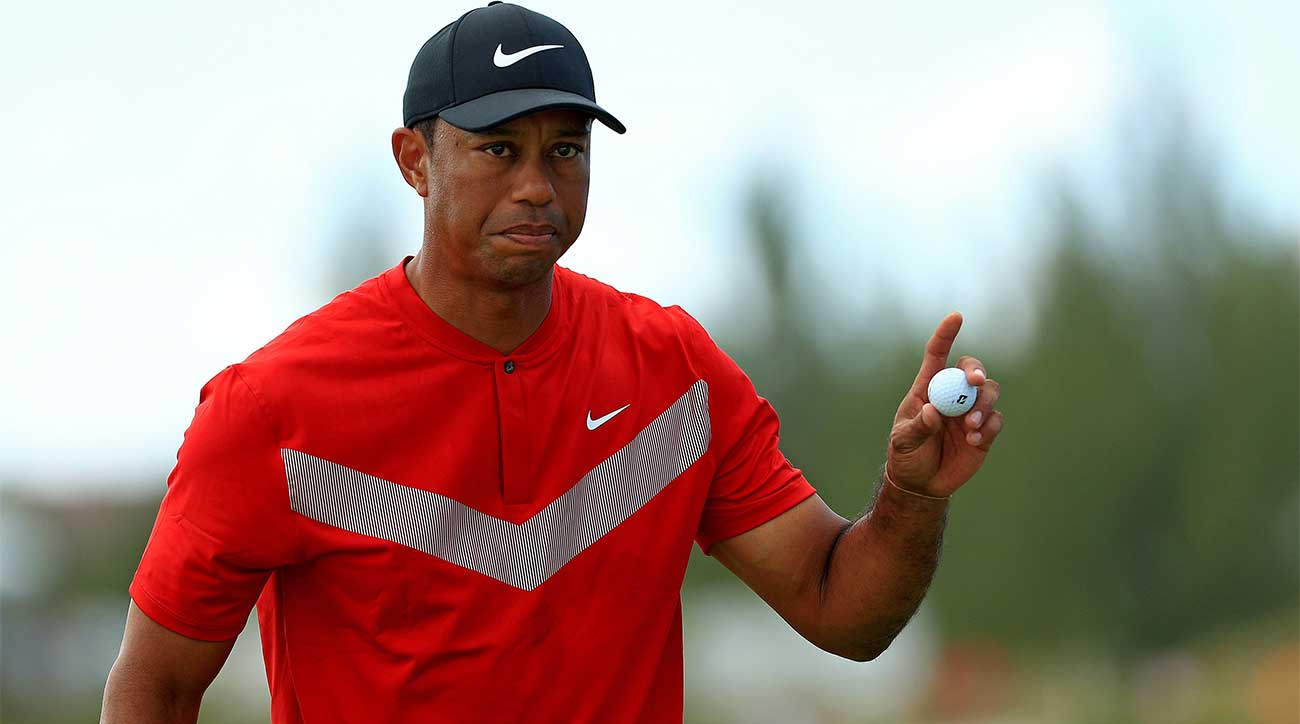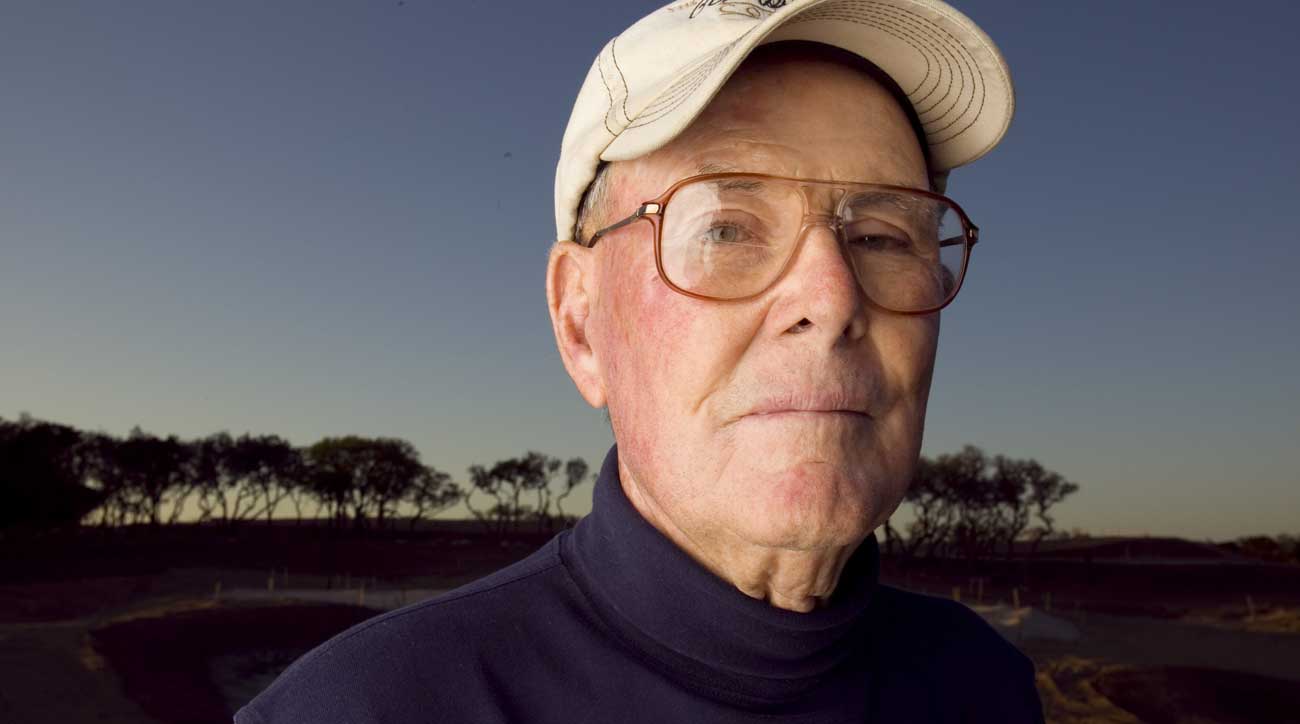 2025 CJ Cup Byron Nelson payout: Purse info, winner’s share
2025 CJ Cup Byron Nelson payout: Purse info, winner’s share
Tour Confidential: For Tiger Woods, would Olympic gold mean more than another major title?
Check in every week for the unfiltered opinions of our writers and editors as they break down the hottest topics in the sport, and join the conversation by tweeting us @golf_com. This week we discuss what milestone Tiger Woods would most like to accomplish, the legacy of architect Pete Dye and more.
1. Tiger Woods announced he’ll start the 2020 calendar year at the Farmers Insurance Open at Torrey Pines on Jan. 23. Tiger’s aiming for win No. 83, which would break Sam Snead’s record of Tour wins. What potential victory would be most meaningful for Woods in 2020: No. 83, an Olympic gold or major No. 16?
Alan Shipnuck, senior writer (@AlanShipnuck): No. 16, because it would put him that much closer to Jack and show that the Masters win was not a last gasp. But don’t discount how much Tiger wants a gold medal — he knows this is likely his last chance. How amazing would it be for Woods to lead the U.S. team into the stadium in Tokyo during the Opening Ceremony, waving the stars and stripes with the whole world watching?
Michael Bamberger, senior writer: Number 16, because it will turn into Number 19 with the new math, and leave him one short of Nicklaus, sitting on 20 and not going anywhere.
Sean Zak, senior editor (@Sean_Zak): Sixteen! This is what it’s all about now. Majors, majors, majors.
Josh Sens, senior writer (@JoshSens): A 16th major, especially a major other than the Masters. Even after that astounding win last April, there were the inevitable “yeah, buts.” As in, “Yeah, but Augusta is likely the only one of the big four he can still win.” Getting yet another somewhere other than Augusta would be one more way for Woods to — pardon the cliche — prove the doubters wrong, etc.
Dylan Dethier, senior writer (@dylan_dethier): With Tiger, it’s always been about the majors. He’s made it that way. Olympic gold would be some kind of fun, though.

2. Our Michael Bamberger wrote about the Sentry Tournament of Champions finish and the real meaning behind the Patrick Reed heckling incident. (In the days since, Reed and Justin Thomas both said they didn’t hear a fan yell “Cheater!” In other Reed news, according to a Golfweek report, a lawyer representing Reed sent Golf Channel analyst Brandel Chamblee a letter demanding that Chamblee stop calling Reed a cheater.) What kind of fan reception do you expect Reed will receive during his 2020 starts, and is there anything the Tour can do to improve the situation?
Shipnuck: It’s going to get worse before it gets better because Reed, with his ridiculous shoveling gesture at the Prez Cup, showed every yahoo out there that they can get under his skin. And look how much attention that lone shout of “Cheater!” got. In the social media age, every bro wants their 15 minutes.
Zak: I expect it to remain this way — jaded, loud, vile — for a number of months. It probably fades, like most things do, once he gets 10 or so more starts in.
Sens: I still think Reed could defuse the situation with a heartfelt mea culpa (“I lost my mind for a minute; I’m really sorry; don’t know what I was thinking,” etc.), because if there’s anything the sporting public likes more than jeering a perceived villain, it’s watching that villain self-flagellate his way to forgiveness. Don’t underestimate the appeal of feeling holier than thou. But since that kind of apology isn’t likely coming from Reed, I’m with Sean and Alan — the verbal abuse will go on.
Dethier: It’s going to be interesting to watch how Reed’s year plays out, especially if he keeps playing as well as he has. If he’s missing cuts, he won’t hear many jeers. But if he’s in contention, everything ramps up. The politeness of Augusta National will remain his haven, but a Winged Foot U.S. Open? Not so much.
Bamberger: I think fan reaction will continue to be vocal and will force the Tour to look at the real issue here, which is not fan reaction to Patrick Reed but fidelity to the rule book, the thing that has always made tournament golf tournament golf.
ADVERTISEMENT
3. Pete Dye, one of the most influential golf-course architects of the last half-century, died on Thursday. Dye, who was 94, had a portfolio that included the likes of Whistling Straits, the Ocean Course at Kiawah Island and TPC Sawgrass, home of the Players Championship. What is most significant about Dye’s legacy?
Shipnuck: He elevated the course designer to celebrity status and made them brand names sought after around the world. He also offered audacious templates expanded upon by the likes of Tom Doak, Mike Strantz and other auteurs.
Zak: His ability to make unforgiving tracks and not apologize for them. It is genuinely fun to watch Tour players struggle, think, struggle some more, and Dye was incredible in piecing such holes together.
Sens: For all the modern elements in his designs, he drew plenty of inspiration from British links and from Golden Age designers like Seth Raynor. In that way, he was a crucial link between the great courses of long ago and the modern minimalist courses earning so much acclaim today. Not to mention that he also directly mentored some of today’s biggest-name architects, including Doak, Bill Coore, Brian Curley and others.
Dethier: When TPC Sawgrass opened in the early 80s, J.C. Snead said the course was “90 percent horse manure and 10 percent luck.” Tom Weiskopf told reporters, “It’s like being inside a great big pinball machine.” These days, we’re used to basically everybody catering to the tastes and frailties of PGA Tour players, but the idea of giving them a test they hate sounds so refreshing. Needless to say attitudes have changed about TPC Sawgrass, but the spirit behind the place defines Dye’s legacy.
Bamberger: The pendulum has swung so far away from the thing that made Pete Dye famous, the beautiful course that’s unplayable for the 95-shooter, and I don’t see it ever going back in Pete’s direction. He was one of the game’s great characters, but so was George Low. I think in the year 2120, golfers will be more inclined to talk about A.W. Tillinghast courses than Pete Dye courses.
4. Dye’s courses were both lauded and criticized for their difficulty, yet architect Rees Jones told GOLF.com: “When the players criticized Pete, he said, ‘Thank you.’ Pete’s courses are hard. Hard and visually exciting.” Which of your experiences on a Dye course most sticks with you?
Shipnuck: Playing Whistling Straits, my caddie said that the day before he and a fellow looper had two older female golfers who didn’t speak English, so to pass the time they had a bet who could get their player to hit into more bunkers. The winning number was 56.
Zak: I’ve played Whistling Straits on the calmest October day, where the course felt straightforward. I’ve also played it on a wind-whipping June afternoon where the 18th, into the fan, felt like the longest, toughest par-4 of my life.
Sens: You mean, other than the time I slipped along one of the railroad tie railings on the Dye Course at Barefoot Resort in Myrtle Beach and fell into a pond? I’d say my one round at the Ocean Course at Kiawah, when I was four under for a wind-aided front nine, and then a zillion over after I turned into the fan. That is sort of the essence of Dye for me. Wild swings on the pleasure-pain continuum. I love playing his courses but I often think I should have a safety word.
Dethier: I’m spoiled as hell, but I’ve had memorable moments tackling that fantastic finish at TPC Sawgrass, slogging through college spring break rounds at PGA Golf Club, basking in the country goodness of Boone Valley and challenging the big-time design at Pound Ridge on a GOLF outing. But my favorite has to be the Honors Course, which I played with longtime course superintendent David Stone, his dog, and then-anonymous course designer Rob Collins. The combo made for a masterclass in architecture appreciation set in a bucolic Southern setting. I’ve never had a round quite like it.
Bamberger: First hole of my married life. Teeth of the Dog. One golfer, one caddie, one bride. Driver in play, 8-iron to 10 feet, made the putt after a caddie consult. In it went. A good start. Dazzling course, by the way. Pete built some beauties.
5. The PGA Tour’s tenure at Trinity Forest was short lived. The Tour announced the Byron Nelson is leaving the Dallas-area course after 2020, putting an end to a courtship that lasted just three years. Trinity Forest, built in 2014 by two of the game’s hottest architects in Bill Coore and Ben Crenshaw, is a rolling, treeless neo-links that is unlike any other regular Tour venue and never drew much support from the game’s top players. Is this a sign that when it comes to host courses, Tour events shouldn’t stray too far from the norm?
Shipnuck: Most Tour players don’t want to be asked interesting questions by the venue. They just want to dial in their TrackMan swings and make birdies. Trinity was too quirky and unorthodox to ever make it as a Tour venue. To quote another golfer who doesn’t get it: Sad!
Zak: I think this course was welcomed by all, and appreciated by many. Was the tournament being played there set up for total success? It sounds like the answer to that question is “No.” Tour players are less likely to return to events with new courses they haven’t seen. The event also had a tough spot in the schedule. Some aspects like fan experience and viewing experience seemed to be lacking…but is that the course’s fault?
Sens: I’ve heard Tour pros say they would return to playing the AT&T if Cypress Point were brought back into the rota. But as a general rule, the artistry of a design isn’t high on the checklist. These guys will play on a tarmac, so long as the price is right and it fits their schedule. Not long ago, during a photo shoot, I asked Xander Schauffele what his favorite course was. His response, in essence, was: “Dude, I’m a professional golfer. I don’t spend a lot of time thinking about course design.” That’s not an uncommon answer on Tour. Guys like Geoff Ogilvy are more the exception than the rule out there.
Dethier: I’m with Sens — the quality of the course architecture has little to do with who shows up for events. There’s a sense of haves and have-nots when it comes to PGA Tour events at this point, and the Byron Nelson is stuck in the latter category for now. It sounds like there are some business decisions behind this move and we should resist reading too much more into it.
Bamberger: Golf holes on TV really need something to define them. All the Open courses have holes with defining characteristics. National Golf Links, Shinnecock Hills, Sankaty Head, the same. That course did not. I’d like to play it, but with no TV buzz it wasn’t going to draw a crowd to see it in person. On TV, you couldn’t see what they were trying to do.
6. Bryson DeChambeau spent hours last week streaming himself playing Fortnite, as documented by our own Luke Kerr-Dineen. What’s the most unusual Tour-pro hobby you’ve encountered?
Shipnuck: The Dude, Nicolas Colsaerts, is known to DJ at clubs. That’s pretty dope.
Zak: Danielle Kang’s affection for animals is probably a touch on the unusual side. She nearly bought a tiger cub in Asia. She’s considered buying tarantulas. We all love animals, right? She does a bit more.
Sens: The love for animals I usually hear about from Tour pros involves their fondness for shooting them. That said, I seem to recall that Jeff Sluman raises Akitas. Haven’t come across that one often. Since you mention Fortnite, I should say — as the father of a couple of teenagers, I’ve been exposed to my fill of that game and I can’t think of many things more boring than playing it, except possibly watching a live stream of someone playing it. (Sighs, shakes head, grumbles something about these damn kids today.)
Bamberger: Ken Green, Joe LaCava’s cousin, bowling. Now Ken and I are about the same age and bowling was hugely popular in my boyhood. In fact, the golf coach of our high-school team was also the bowling coach. But Ken Green is the only Tour winner I can ever recall who listed bowling as a hobby.
Dethier: Phil Mickelson’s new fondness for hiking on the Maine Coast tickled my fancy this summer. But it’s gotta be Bubba Watson’s hobby of odd jobs, which include minor league baseball team owner, candy store owner, tee ball coach, celebrity hoops player and aspiring actor. It’s no wonder he thinks so often about quitting golf.
To receive GOLF’s all-new newsletters, subscribe for free here.
ADVERTISEMENT






